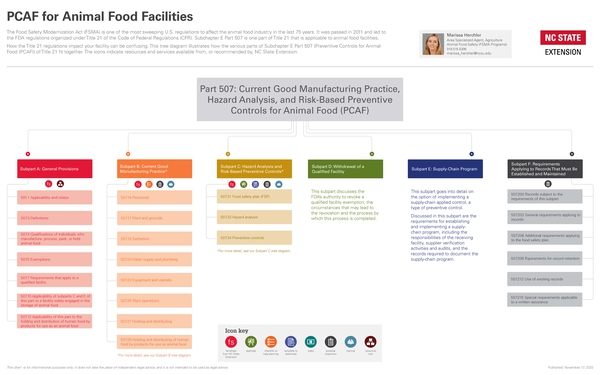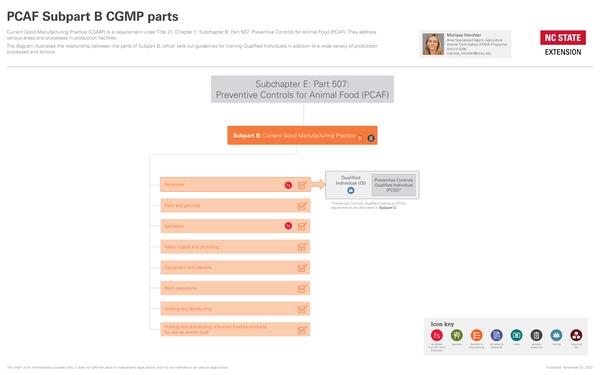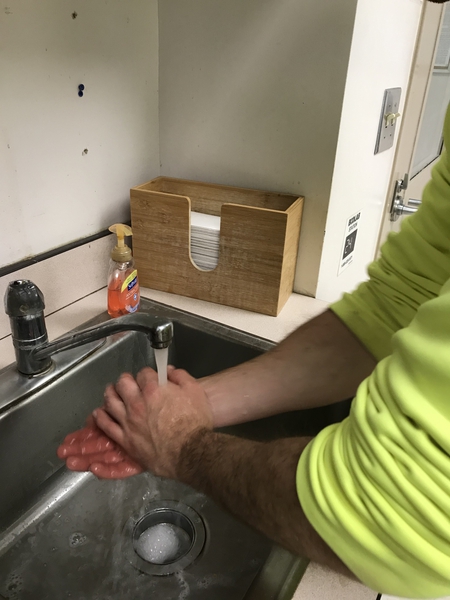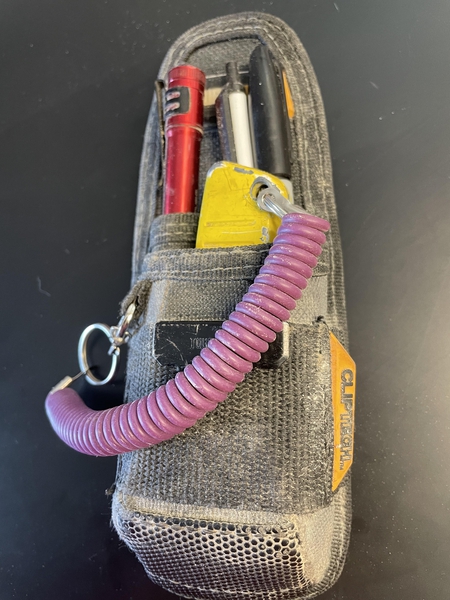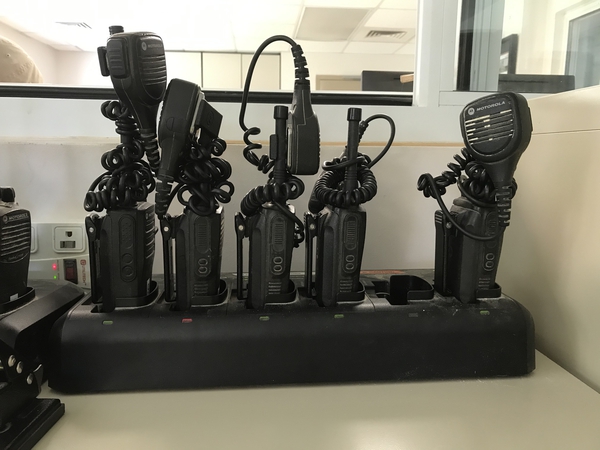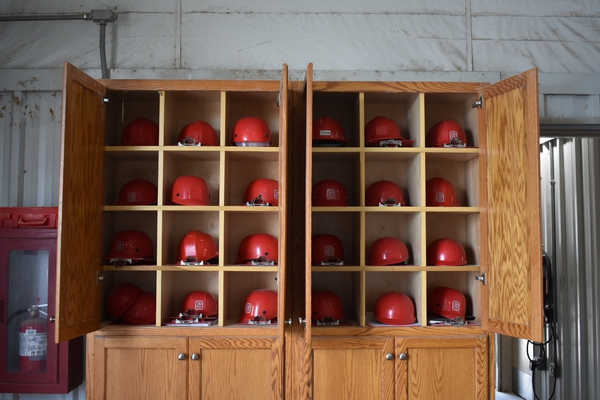Current Good Manufacturing Practices for Animal Food Producers
The U.S. Food and Drug Administration (FDA) is the regulatory body responsible for inspecting animal food producing facilities. In 2011, the Food Safety Modernization Act (FSMA) was passed and a number of rules and regulations impacting the feed and pet food industries were implemented. Most impactful for the animal food industry is the Preventive Controls for Animal Food rule (PCAF), which includes Current Good Manufacturing Practices (CGMP) and Hazard Analysis and Risk-based Preventive Controls (food safety plan).
CGMP are baseline food safety standards the FDA considers
“Necessary to prevent animal food from containing filthy, putrid, or decomposed substances, being otherwise unfit for food, or being prepared, packed, or held under insanitary conditions whereby it may have become contaminated with filth or whereby it may have been rendered injurious to health.” (Preamble, II: Legal Authority).
The FSMA regulation can be difficult to implement because it was constructed to be general enough to apply to new and existing facilities of all sizes, making food for any and all animals.
Terms within the regulation, such as “adequate”, are subjective and can cause additional confusion. For this rule, adequate means “that which is needed to accomplish the intended purpose in keeping with good public (human and animal) health practice”.
The first section of CGMP addresses facility personnel. This factsheet will explore the different components of personnel CGMP and ways facilities can implement CGMP into their existing operations.
Personnel CGMP
The purpose of the personnel CGMP is to provide management and employees of animal food processing facilities with guidelines for the educational and training requirements necessary for employees to have in order to produce safe food products.
According to the Code of Federal Regulations (CFR),
“The management of the establishment must take reasonable measures and precautions to ensure that all persons working in direct contact with animal food, animal food-contact surfaces, and animal food-packaging materials conform to hygienic practices to the extent necessary to protect against the contamination of animal food.” (21 CFR 507.14 (a)).
Personnel CGMP applies to all individuals in an animal food producing facility whose actions can impact the safety of the animal food being produced. This is not limited to just the full-time employees of a facility. It could also apply to seasonal workers, volunteers, visitors, interns, part-time employees, etc. whose actions or job duties can impact animal food safety.
There are 5 main components of personnel CGMP:
-
Maintaining adequate personal cleanliness;
-
Washing hands thoroughly in an adequate hand-washing facility as necessary to protect against contamination;
-
Removing or securing jewelry and other objects that might call into animal food, equipment, or containers;
-
Storing clothing or other personal belongings in areas other than where animal food is exposed or where equipment or utensils are cleaned; and
-
Taking any other necessary precautions to protect against the contamination of animal food, animal food-contact surfaces, or animal food-packaging materials.
This factsheet provides a brief overview of the personnel CGMP requirements and recommendations. For a more in-depth experience, NC State Feed Milling offers a free training course to help meet the training requirements under the personnel CGMP. NC State’s Animal Food Safety Qualified Individual course is available in English, Spanish, and Chinese.
Note: This document represents the NC State Feed Milling program recommendations for complying with the FSMA personnel CGMP. Be sure to also follow your facility’s protocols for personnel, especially if they are more stringent than these recommendations.
Personal Cleanliness
21 CFR 507.14 b(1) Maintaining adequate personal cleanliness;
In short, the level of expected personal cleanliness depends on the nature of the employees’ responsibilities and the type of food being manufactured.
There are a few basic things to keep in mind when establishing personal cleanliness rules for your facility:
-
Wear clean clothing. Contaminants or animal food safety hazards (mud, oil, foreign material, and grease) can be brought in on clothing or shoes. Have spare clothing or uniforms available to change into if your clothing becomes dirty with potential contaminants.
-
Keep biosecurity in mind. When exiting and entering your facility, be aware of where you have been and follow the biosecurity protocols for your facility. This may include wearing boot covers, coveralls, hair/beard nets, and/or gloves when necessary.
-
When in doubt, call out. If you are feeling unwell, or are showing symptoms of a potentially contagious illness, speak with your supervisor and determine whether or not you could contaminate products.
-
Wash your hands frequently with soap and water to maintain your own and others’ good health and to keep animal food safe. Establish protocols for when employees should wash their hands, such as
-
after using the restroom, sneezing or coughing, or touching foreign materials or surfaces; and
-
before consuming food or drink, touching your mouth or nose, or entering the manufacturing area.
-
Washing Hands
21 CFR 507.14 b(2) Washing hands thoroughly in an adequate hand-washing facility as necessary and appropriate to protect against contamination;
There is a little overlap between the personal cleanliness section and washing hands. In order to maintain personal cleanliness, you should have established handwashing procedures (examples outlined above) for individuals to follow.
Because of the flexibility of FSMA and the PCAF rule, handwashing with soap and water is not the only way to meet the personnel requirements for washing hands. For facilities that do not have access to clean, running water, hand sanitizers may be the only option and would be considered adequate if they can aid in the prevention of animal food contamination. Hand sanitizers can also be used to supplement soap and water.
In light of the recent COVID-19 pandemic, many places of work have enhanced their personal cleanliness and sanitation protocols to include more frequent handwashing and disinfection of surfaces. The CDC has developed a video on What You Need To Know About Handwashing. In addition to the recommendations for handwashing above, management should also consider asking employees to wash their hands after touching an animal, animal feed, or animal waste, after handling pet food or pet treats, and after touching garbage.
Food Safety Modernization Act Current Good Manufacturing Practices for Food for Animals and COVID-19
Removing or Securing Objects
21 CFR 507.14 b(3) Removing or securing jewelry and other objects that might fall into animal food, equipment, or containers;
It is important for employees to remove or secure any items they don’t need for their job duties before going into the manufacturing area. This could include:
-
removing jewelry, such as earrings, rings, and watches;
-
removing cell phones, if radios or other devices are used for communication; and
-
securing radios or tools required for your job duties.
The FDA has an example list of items that may need to be removed or secured to prevent them from falling into animal food, equipment or containers (Guidance for Industry #235: Current Good Manufacturing Practice Requirements for Food for Animals). These items may be required for job duties throughout the day, so it’s important to make sure they are secured to prevent them from falling into the production process. Examples of items that may need to be removed or secured include:
-
pens,
-
sunglasses,
-
gloves,
-
tools,
-
keys,
-
pocket knives, or
-
cell phones.
One way to store necessary items or tools is in tool pouches. Tether loose items to these pouches. Removing unnecessary items and securing tools is not only a good way to prevent contamination of animal food, but can also help protect equipment from being damaged by foreign materials.
Storing Personal Belongings
21 CFR 507.14 b(4) Storing clothing or other personal belongings in areas other than where animal food is exposed or where equipment or utensils are cleaned;
Another requirement for meeting the personnel requirements of CGMP is storing clothing or other personal belongings away from the manufacturing areas where animal food is exposed or where tools and utensils are cleaned.
If possible, management should provide employees with an area to store personal belongings or employees should keep their personal belongings out of the manufacturing areas. Examples of areas to store personal belongings include:
-
lockers,
-
cabinets,
-
break rooms,
-
refrigerators, and
-
coat hooks/racks.
If there are no areas available to store personal belongings, consider leaving them in your vehicle or at home.
Other Precautions
21 CFR 507.14 b(5) Taking any other necessary precautions to protect against the contamination of animal food, animal food-contact surfaces, or animal food-packaging materials;
This part of the personnel CGMP regulation covers any other ways employees may need to take action to prevent contamination of animal food, animal food-contact surfaces, or animal food-packaging materials.
Hair and beard nets may be required in some facilities to prevent the contamination of animal food. Requiring employees to wear boot covers, coveralls, or masks may also be appropriate, depending on the facility and each employee’s responsibilities. Make sure the protocols you have in place are clearly communicated to employees and visitors.
Though not required by the PCAF CGMP, employers may require employees and visitors to wear safety-toe shoes, bump caps or hard hats, hearing or eye protection, or other personal protective equipment. It is a good practice to have protocols in place to encourage safety for individuals at your facility.
Think about the type of facility you work in and determine the appropriate method of cleaning. In some facilities, wet cleaning may be appropriate to ensure there is no contamination of animal food. This mostly occurs in facilities that are concerned with biological pathogens and need to sanitize surfaces. It is important to make sure sanitation materials or chemicals do not contaminate animal food on animal food contact surfaces. Ensure surfaces are clean and dry prior to manufacturing. Use environmental monitoring programs, if necessary, to test for the presence of pathogens in your facility.
Many facilities will only be concerned with dry cleaning. For facilities that manufacture livestock or poultry feed, it is likely the equipment used in these processes is not meant to be wet cleaned and that is fine. Dry cleaning may involve sweeping or using compressed air to remove dust buildup because dust or feed buildup may promote pests. When dry cleaning, be sure the cleaning process doesn’t affect the manufacturing process by introducing waste or non-food materials into the system.
Now that you’ve gone through the process of making high quality, safe animal food, the next step is to make sure the packaging materials are also safe. Packaging materials should be kept clean and dry. They should be stored in a way that does not promote contamination. They should be kept free from pests or pest droppings. Most importantly, storage materials should be inspected prior to use. Visual inspection is the first defense against contamination.
NC State Resources
The NC State Feed Milling Extension program has developed a number of resources to help facilities comply with CGMP standards.
-
One of the most important components of personnel CGMP is training. We have developed an online animal food safety training for qualified individuals that covers the personnel CGMP section of CFR 507.14. The training is free and is available in English, Spanish, and Chinese.
Note: This training should be supplemented with facility- and job-specific instruction or training.
-
The NC State Feed Milling website has several pages relevant to FSMA and CGMP compliance. The Animal Food Safety section of the website provides information on the FSMA rules that could impact animal food facilities and link to many available resources.
-
We have several extension factsheets that explain animal food safety topics in more depth:
-
Food Safety Modernization Act Current Good Manufacturing Practices for Food for Animals and COVID-19
-
How Animal Food Facilities Can Prepare for Regulatory Inspections
-
Aflatoxins and Animal Food Safety, part of the understanding and managing animal food safety hazards factsheet series
-
FSMA Preventive Controls for Animal Food (PCAF) Exemption Decision Tree Tool was created to help management determine which parts, if any, of the PCAF rule their facility is exempt from and what those exemptions require
-
-
With so many components of CGMP, it is important to be able to determine whether your facility is prepared for a CGMP inspection. Use our CGMP checklist to see where your facility could improve.
Other Resources
The FDA has several guidance documents to help facilities learn more about federal regulations they may be subject to.
The Food Safety Preventive Controls Alliance (FSPCA) was established to provide food safety training in accordance with food safety regulations in the U.S. The FSPCA offers an online Current Good Manufacturing Practices for Animal Food Protection course that is completely online for $99 per person. You can also access their Preventive Controls for Animal Food curriculum manual online for free to learn more about CGMP and the preventive controls requirements.
Trade associations have also been proactive in developing and providing guidance for facilities. Explore their websites to find useful information available for members and non-members.
Publication date: May 18, 2021
N.C. Cooperative Extension prohibits discrimination and harassment regardless of age, color, disability, family and marital status, gender identity, national origin, political beliefs, race, religion, sex (including pregnancy), sexual orientation and veteran status.
NC Cooperative Extension prohíbe la discriminación por raza, color, nacionalidad, edad, sexo (incluyendo el embarazo), discapacidad, religión, orientación sexual, identidad de género, información genética, afiliación política, y estatus de veteran.
The use of brand names in this publication does not imply endorsement by NC State University or N.C. A&T State University of the products or services named nor discrimination against similar products or services not mentioned.
N.C. Cooperative Extension prohibits discrimination and harassment regardless of age, color, disability, family and marital status, gender identity, national origin, political beliefs, race, religion, sex (including pregnancy), sexual orientation and veteran status.


